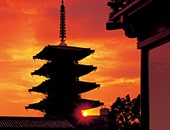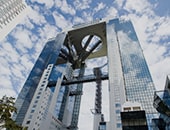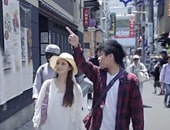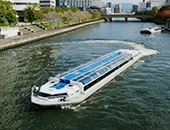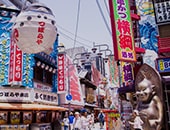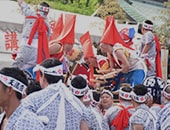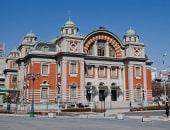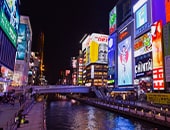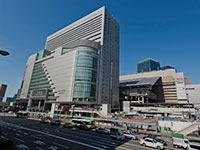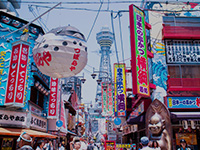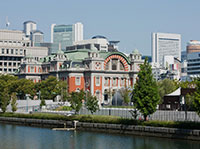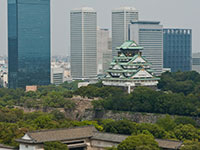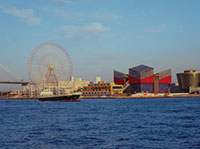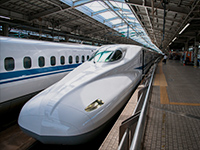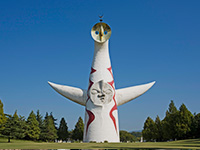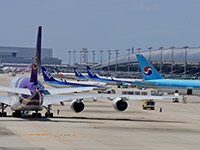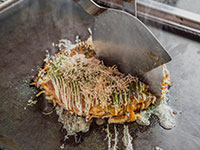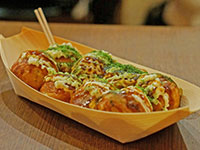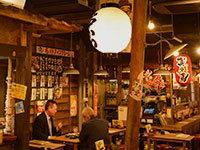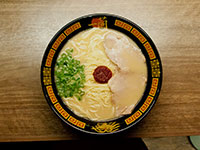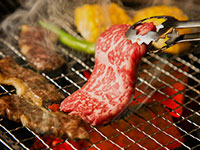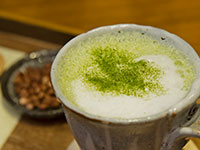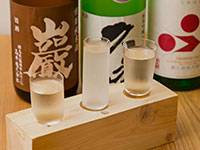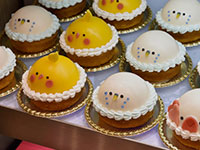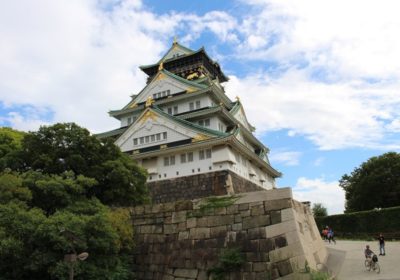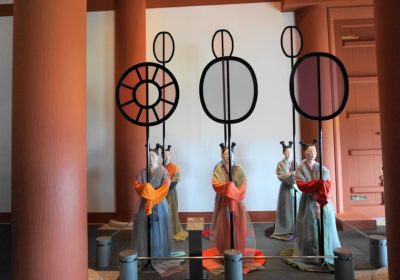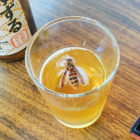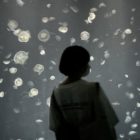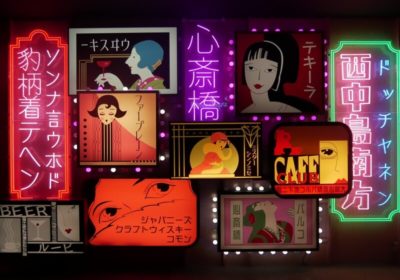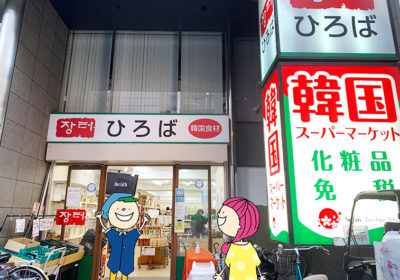

Supporter
So what’s inside Osaka Castle? Is it worth the price of admission?
Ever wonder what’s inside Osaka Castle’s main tower? Some people visit Osaka Castle Park and never go inside. Tons of people ask “Is it worth the price of admission?”
Osaka Castle is so beautiful viewed from the outside, and the interior isn’t the original. So why would you bother going inside? Well, let me show you…
(Contents)
■ First, a little history
Osaka Castle was created during a very tumultuous and climactic point in Japanese history that has captured the attention of scholars and elementary school students alike. There are three big names you need to know to understand this period—Oda Nobunaga (1534–1582), Toyotomi Hideyoshi (1537–1598), and Tokugawa Ieyasu (1543–1616). The personalities of these three very powerful men, or rather their methods of dominating and uniting the country, are often summed up with this saying (translated from Japanese):
Toyotomi Hideyoshi: “If a bird doesn’t sing, make it sing”
Tokugawa Ieyasu: “If a bird doesn’t sing, wait for it to sing”
These men were the main actors in this period who are known for uniting the disparate clans and regions of the country. Essentially, Nobunaga laid the framework and was feared for his brutal nature. Hideyoshi seized the opportunity to avenge Nobunaga’s death and seize control, while Ieyasu bided his time and took the reigns after Hideyoshi’s death (by natural causes). So now that we know the main actors, let’s take a deeper look into the history and the origins of Osaka Castle.
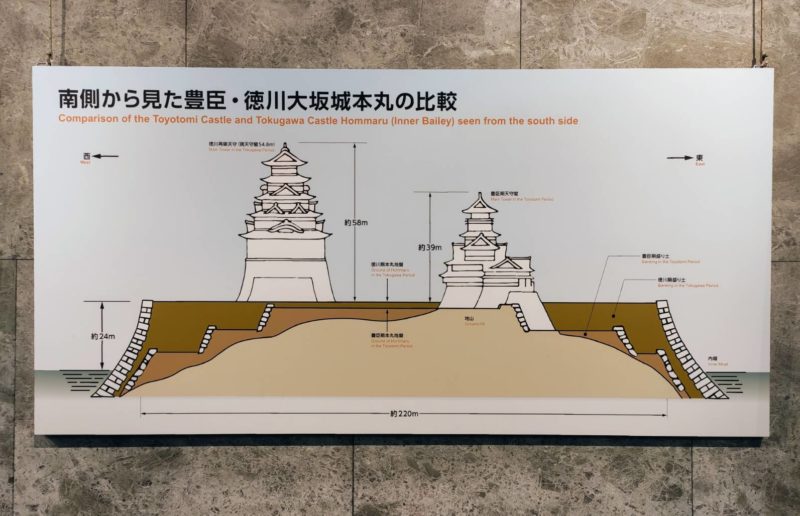
The site of Osaka Castle was once the grounds of Ishiyama Honganji, a powerful and influential monastery turned massive temple complex that was first built in 1496. Because of its reputation for being inconquerable, Oda Nobunaga, who fought mercilessly to unify the nation, had the temple burned to the ground in 1580.
Just two years later, Nobunaga was killed during a turn of events at Honnoji Temple in Kyoto and it was Toyotomi Hideyoshi who avenged his death, thus seizing control of Nobunaga’s massive territory. The following year, in 1583, the original Osaka Castle (Toyotomi’s Castle) was built near the site of the former Ishiyama Honganji Temple in Osaka under orders from Toyotomi Hideyoshi.
The other important figure—Tokugawa Ieyasu—while often aligned on the same side of battle as Hideyoshi, he was a major rival and was sent to live in Edo, a small fishing village far from the seat of power. This small out-of-the-way village eventually grew into modern-day Tokyo. Ieyasu plotted for years before seizing control of the Shogunate in 1600 after Hideyoshi’s death and eventually defeated Hideyoshi’s descendants and their loyalist forces at Osaka in 1615. Thus the first Osaka Castle was destroyed.
In 1620 the Tokugawa shogunate began reconstructing a second version of the castle, a major effort that took 10 years to complete. The main building of this castle, was also unfortunately lost to history when it was struck by lightning in 1665. Remaining structures were destroyed further as the years wore on.
Finally, in 1931 the main castle was again rebuilt and the area around it was later opened as a public park. This third rendition of the tower shares elements of both versions of the previous Osaka Castles, but heavily resembles the Ieyasu castle keep. Which is so surprising! We think of Osaka Castle as the stronghold of the Toyotomi clan, but the castle we see today is actually a reconstruction of the castle built by Toyotomi Hideyoshi’s greatest enemy!
■ Getting there
Since the park is pretty big, there are lots of train stations within walking distance of Osaka Castle Park—Morinomiya Station (on the Osaka Metro Chuo Line or JR), Tanimachi 4-chome Station (on the Osaka Metro Chuo or Tanimachi Line), Morinomiya Station (on the JR Osaka Loop Line), Osakajokoen Station (on the JR Osaka Loop Line), and Temmabashi Station (on the Osaka Metro Tanimachi Line or Keihan Main Line), Osakajokitazume Station (on the JR Tozai Line)… You can even walk from Osaka Business Park (on the Osaka Metro Nagahori Tsurumi-ryokuchi Line).
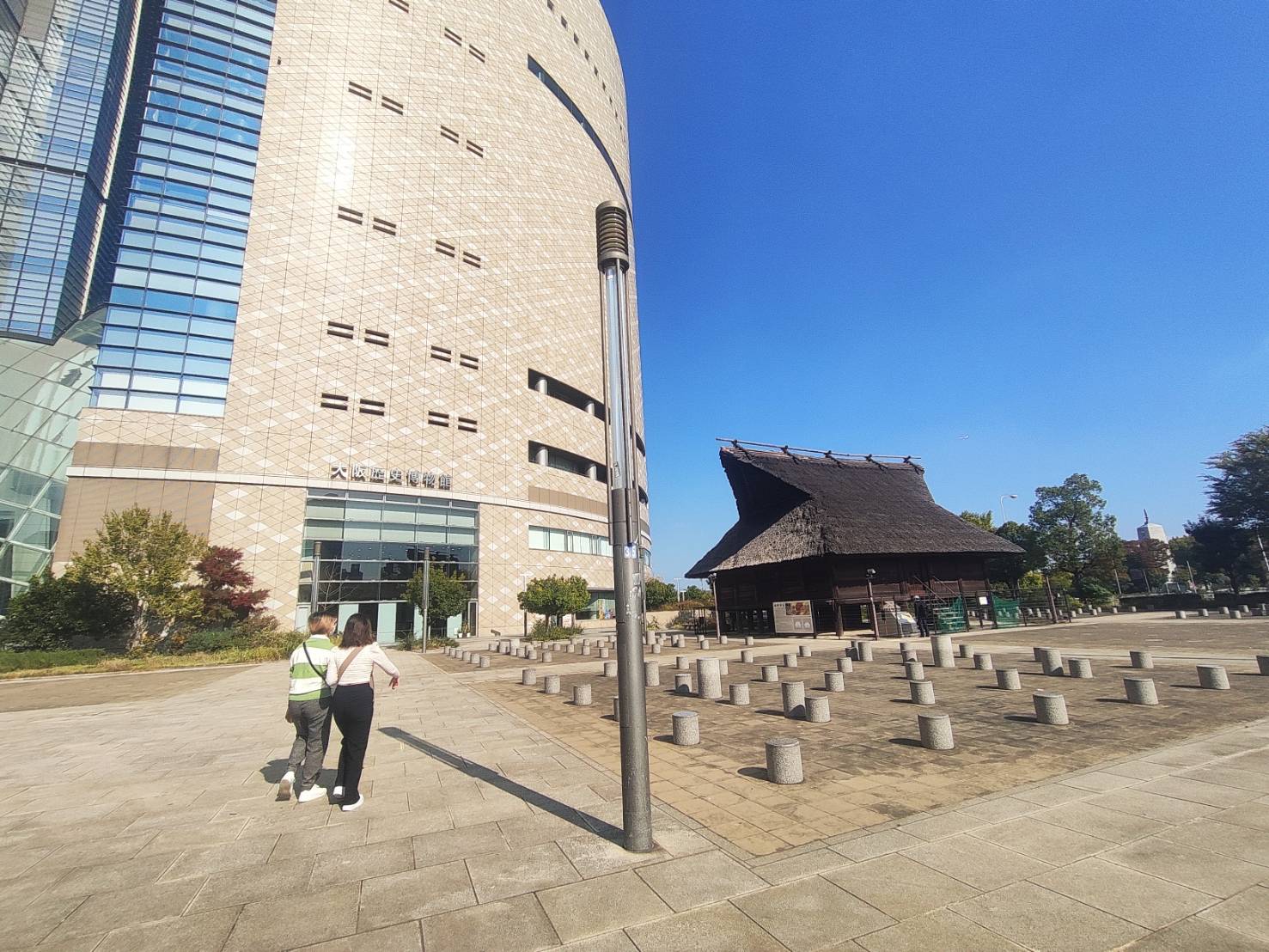
I chose the Tanimachi 4-chome Station since it’s on the Chuo Line and has a comparatively short walk up to the Castle’s Main Tower. Exit 1-B puts you right in front of the Osaka History Museum and you can take a close-up look at the old Hoenzaka Warehouse replica. Great warehouses like this once stood here during the fifth century and reminds us that this spot has historically been an powerful stronghold.
■ All the accessories—Gates, Turrets, & Stone Walls
When you enter the park from this southwest corner you’re close to Otemon Gate, which is gorgeous and you get a great view of Sengan Yagura, the oldest building remaining in the park. This turret was built in 1620, meaning it was one of the earliest buildings completed during the second construction of the castle. It would have served as a lookout point to protect Otemon Gate from an enemy attack. You can actually go inside the turret on certain holidays & weekends if you purchase a ticket at the Nishinomaru Garden ticket counter, which you’ll pass as on the way to the Main Tower.

The many gates are all so beautifully photogenic, especially Sakuramon Gate. As you peer through the gate, you’ll see the Main Tower decked out in glittering gold, shockingly bright white, and a dreamy patina green just beyond another stone wall. The square gate surrounds the castle tower like a perfectly placed picture frame.
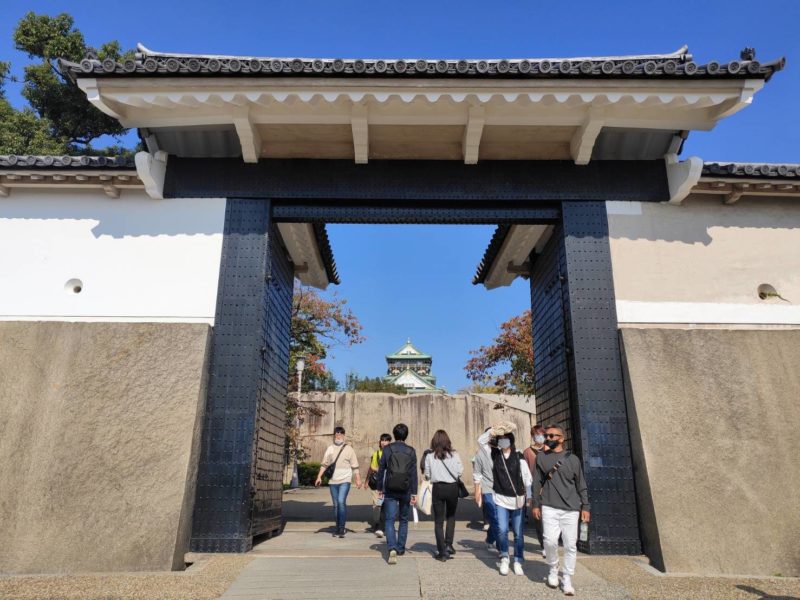
Ogle at the massive stones in the castle walls.
Just inside the Sakuramon Gate, you’ll see this huge stone, known as Takoishi or Octopus Stone. It’s the largest in the park and weighs approximately 108 tons. Look hard at the markings on the stone and see if you can make out the octopus shape. (Hint: It’s on the left side.) This particular rock was transported all the way from Inujima Island in the Seto Inland Sea. Can you imagine how difficult that must’ve been to transport something this heavy?
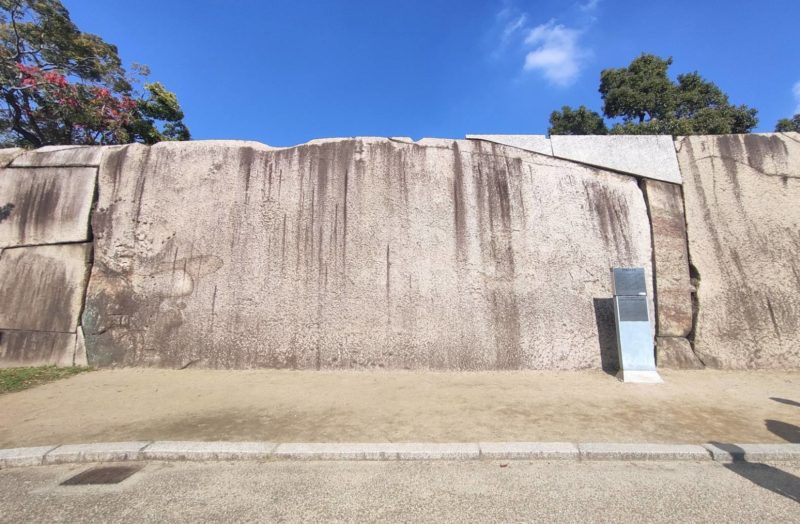
Look around on your way up to the castle and you may notice rocks indented with a row of holes. They’re visual evidence of the method used to split granite during the Edo period (1603–1867). A skilled stoneworker would read the grain of the rock before drilling these holes, then driving wedges into the rock to split the granite.
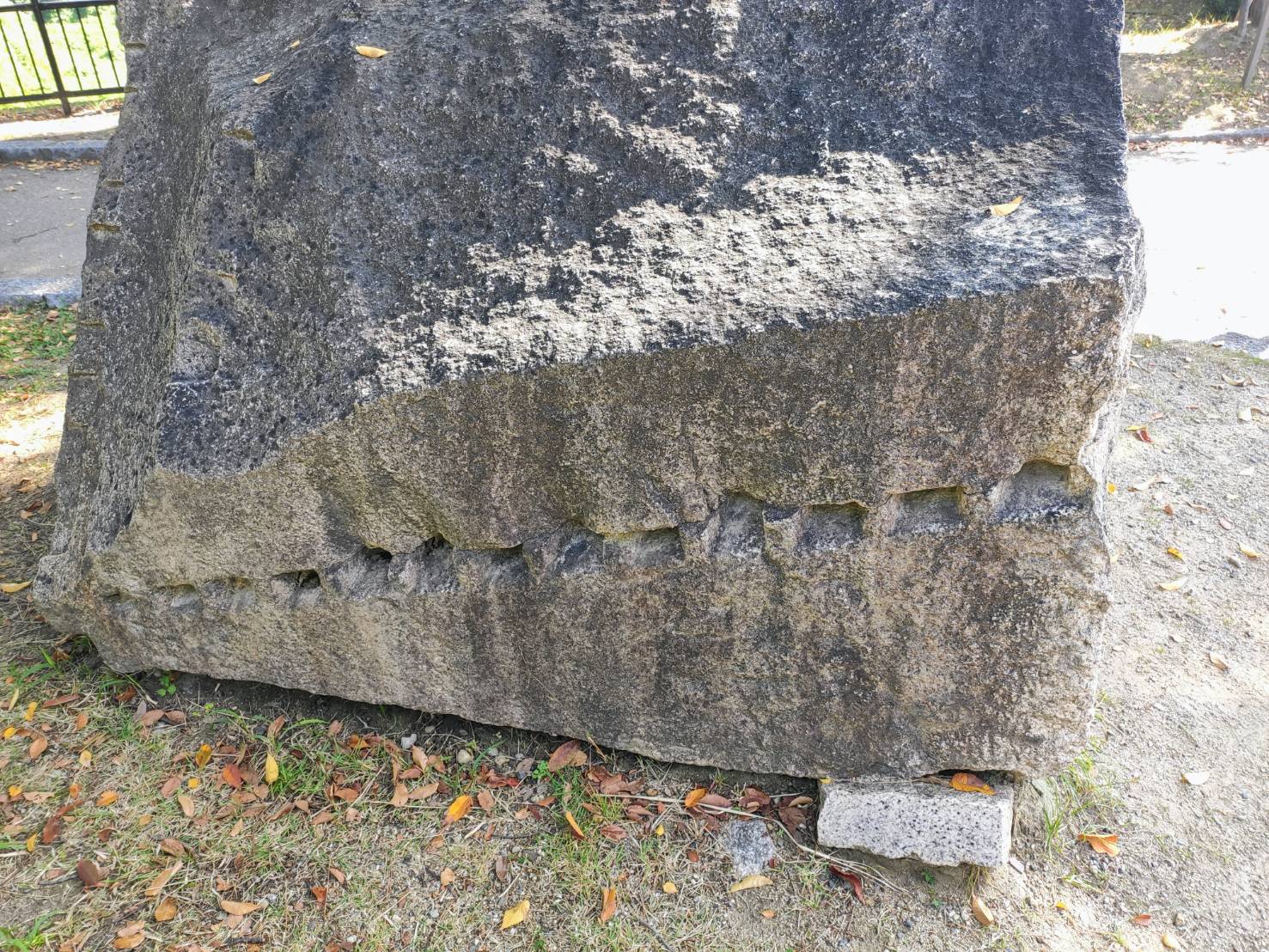
The stone walls you see today were primarily built between 1620–1629 and are comprised of rocks from various parts of Japan. After defeating the Toyotomi family in Osaka, the Tokugawa Shogunate ordered the Daimyo (feudal lords) of Western Japan to construct the castle walls as a means of both securing their loyalty and occupying them should they try to rise against his forces again.
If you have a really good eye, or perhaps a map you’ll be able to find the distinctive family crest markings carved into stones indicating which Daimyo built the walls. This is the ultimate scavenger hunt!
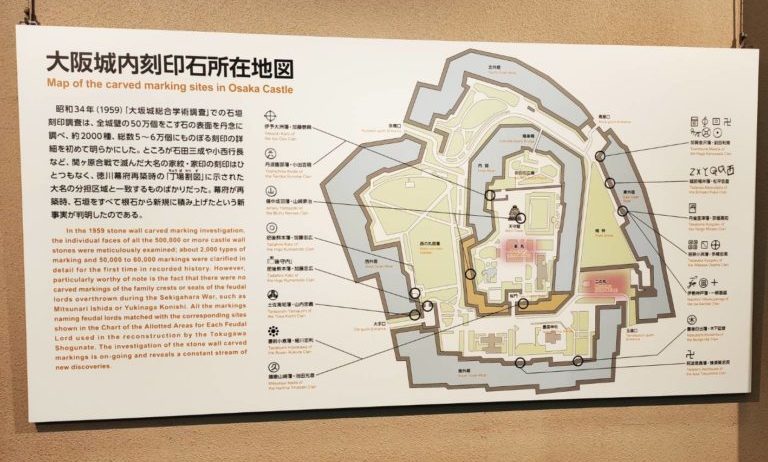
I found this map inside the museum, which brings us to the main topic—What’s inside the museum?
■ Inside the tower—Museum Exhibits
Finally, Osaka Castle Museum! As stated above, the Main Tower you see today is not the original built by Toyotomi Hideyoshi, nor is it the second incarnation of Osaka Castle Tower, built by the Tokugawa Shogunate. This is actually the third version of the castle tower and it was built in 1931. You can call it Osaka Castle the Third if you like…

Although the interior is not the original, there is still a lot of history lurking inside the castle keep. Let’s start at the bottom and work our way up.
1st Floor: Museum Entrance
This is the museum entrance. There is an audio guide rental counter (Japanese, English, Korean, and Chinese languages available), museum shop, and movie theater to learn about the history of Osaka Castle and Hideyoshi Toyotomi. Subtitles are provided in those same four languages.
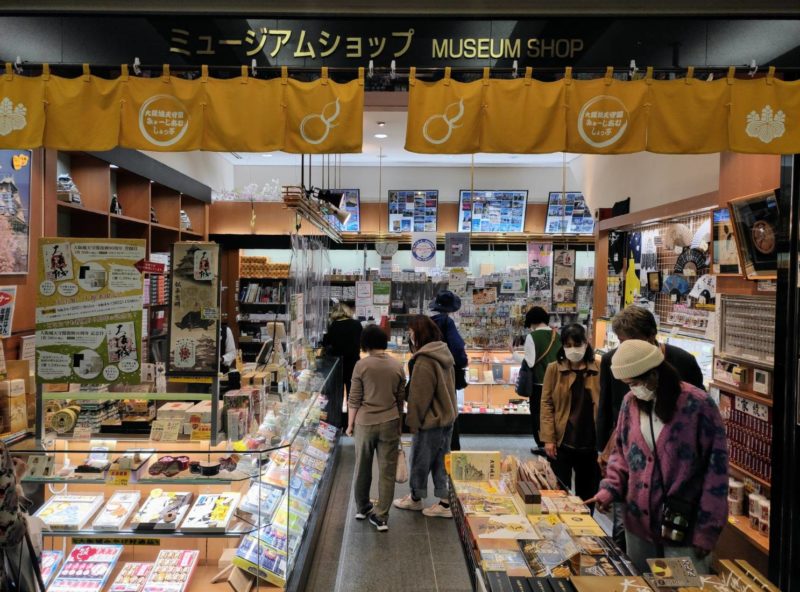
2nd Floor: Osaka Castle Facts & Figures
This is where it starts to get really exciting! You can view a full-scale replica of a golden shachihoko (a mythical creature resembling a tiger-headed carp), which you may have noticed outside, biting down on the castle’s roof ridges. Next to it is the fusetora (crowching tiger) replica, the same as the ones adorn the upper tier of the castle facade.
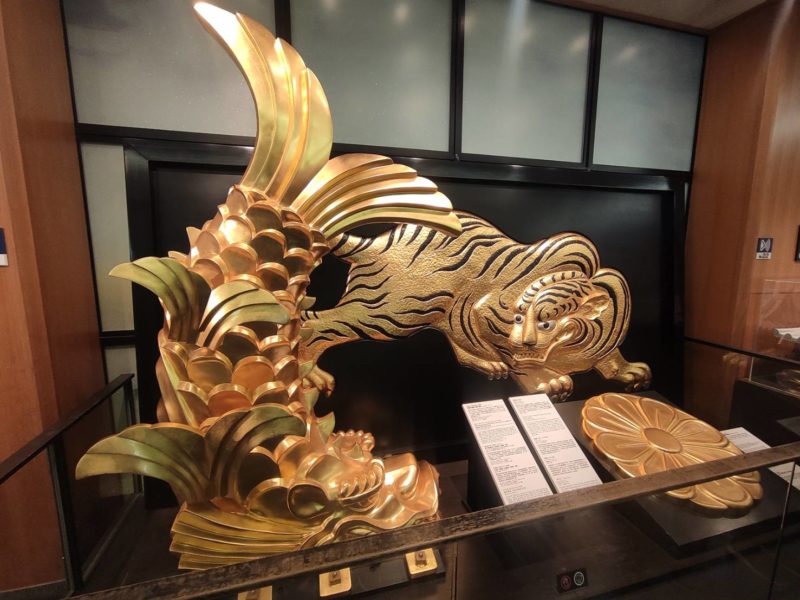
3rd Floor: Toyotomi Hideyoshi and His Era
Sadly, photography is prohibited on the 3rd and 4th floors of the museum. So please use your imagination. Here you can see miniature models of the two different versions of Osaka Castle—the older castle built under Toyotomi Hideyoshi and the second version built under the Tokugawa regime. The styles are very visibly different and fun to compare.
On this floor you’ll also see the famed golden tea room. Hideyoshi was known for his showy taste and affinity for gold. He had a tea room constructed almost entirely of gold. Everything in the room glistens gold—the screen doors, the traditional ceiling, the trays—everything but the tea whisk!
As you wind around the displays, you can also admire various sets of samurai armor. Imagine walking onto a battle field dressed in something so ornate. Each helmet is different and seems bring each suit of armor to life.
If your timing is good you might even get to see Hideyoshi’s Mt. Fuji surcoat on display. Made of imported wool, the coat bears a stylish asymmetrical depiction of Mt. Fuji that appears almost gold against a black background. It’s very stylish and incredible to imagine such a powerful historical figure wearing the clothing that’s right before your eyes.
4th Floor: Toyotomi Hideyoshi and His Era
Sadly, this floor also doesn’t allow photography either. But there are countless historic artifacts on display, primarily from the Warring States period (1467–1568) including battle flags, letters written by Toyotomi Hideyoshi, and a centuries old folding screen depicting the old town of Osaka.
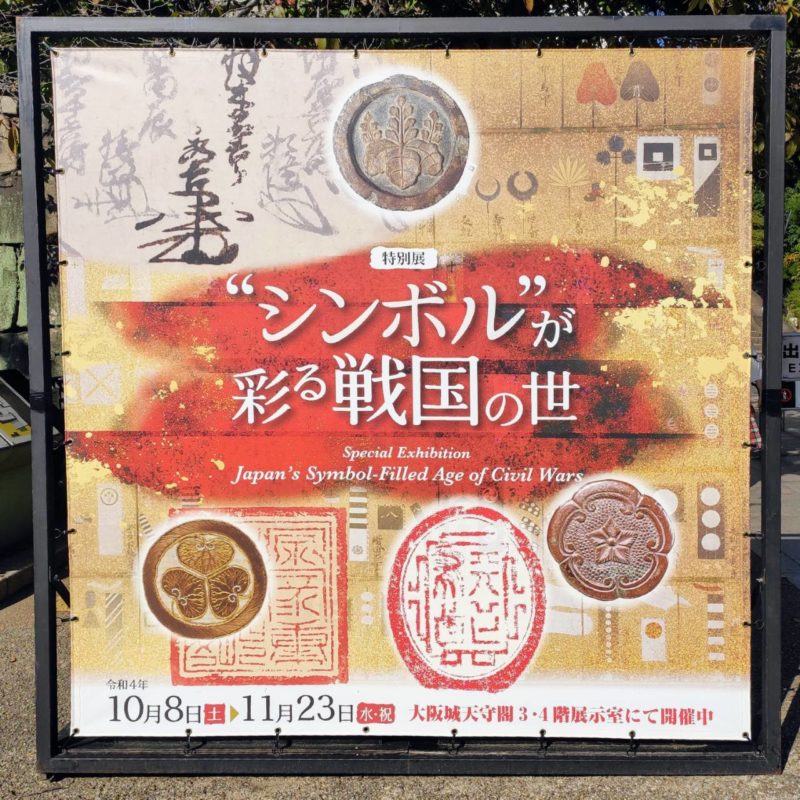
Displays on this floor change multiple times a year. During my visit, there were many documents and artifacts on display showcasing the art and styles from this period in kao (written samurai signatures), insho (seals), and kamon (family crests).
5th Floor: Scenes from “The Summer War in Osaka” Folding Screen
As you move up to this floor, you can read in depth about the various actors vying for power during the late sixteenth century. The information panels are written in both Japanese and English and show illustrations of each feudal lord. It’s essentially a Who’s Who of important warlords.

This floor also has the impressive miniature battle scene of the Summer Seige on Osaka Castle, when Tokugawa troops eventually gained control over the last remaining Toyotomi stronghold in Osaka. Look closely and you may see the fatally loyal Sanada Yukimura fighting valiantly on the Toyotomi side. He stands out in his red battle armor and famous helmet adorned with deer antlers and six coins, fare for a soul to cross the mythical river Sanzu no Kawa in the afterlife.
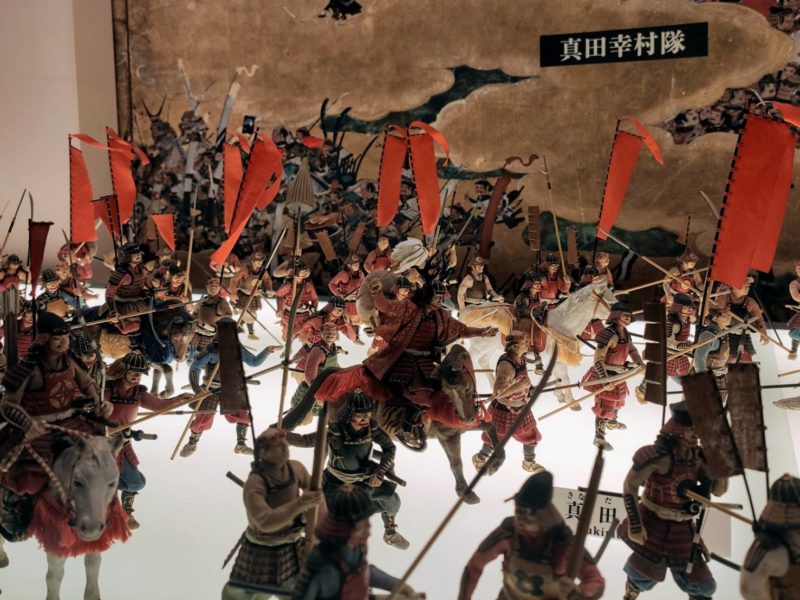
*The 6th floor is not open to the public so you’ll climb an extra set of stairs to get to the next exhibit.
*Elevators for the general public will take you as far as the 5th floor. Guests in wheelchairs are permitted to use elevators all the way up to the 8th floor. Please ask staff if you need assistance.
7th Floor: The Life of Toyotomi Hideyoshi
This floor is lined with small diorama windows showing 19 different scenes from the life of Toyotomi Hideyoshi—in hologram! Music and dialog accompanies the projected figures as they act out major scenes of Hideyoshi’s life, like the Taiko Land Survey he ordered to evaluate farmland in his domain and the Grand Tea Party held at Kitano in Kyoto.
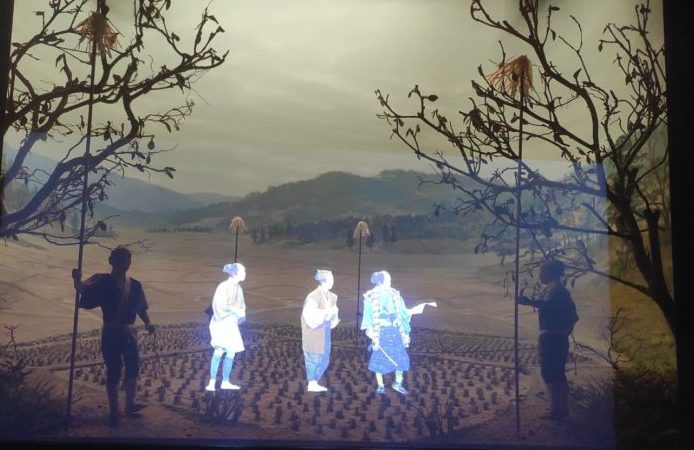
The tiny figures are fun to watch as they fade in and out of the windows. Slightly transparent the figures can make you fall in love with this once cutting-edge technology, which is now delightfully retro.
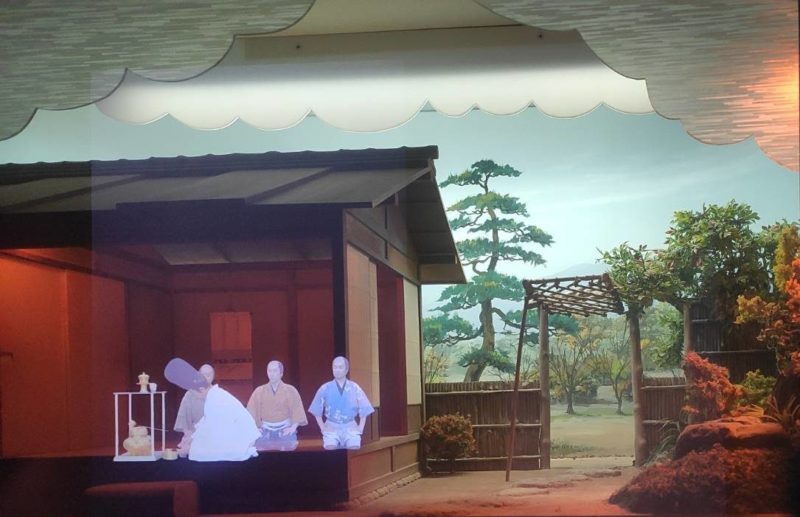
8th Floor: Observation Deck
A small gift shop sits in the corner of the 8th floor and there are two corners displaying 3-D stereoscopic panels that will give you an idea of what the landscaped below looked like when Osaka Castle was first built. But the main attraction here is the open-air observation deck. Peer out over Osaka from the top floor of the Main Castle Tower, which measures 50 meters above ground. Osaka is so different than it would have been in Hideyoshi’s day. You can see skyscrapers and modern buildings in every direction.
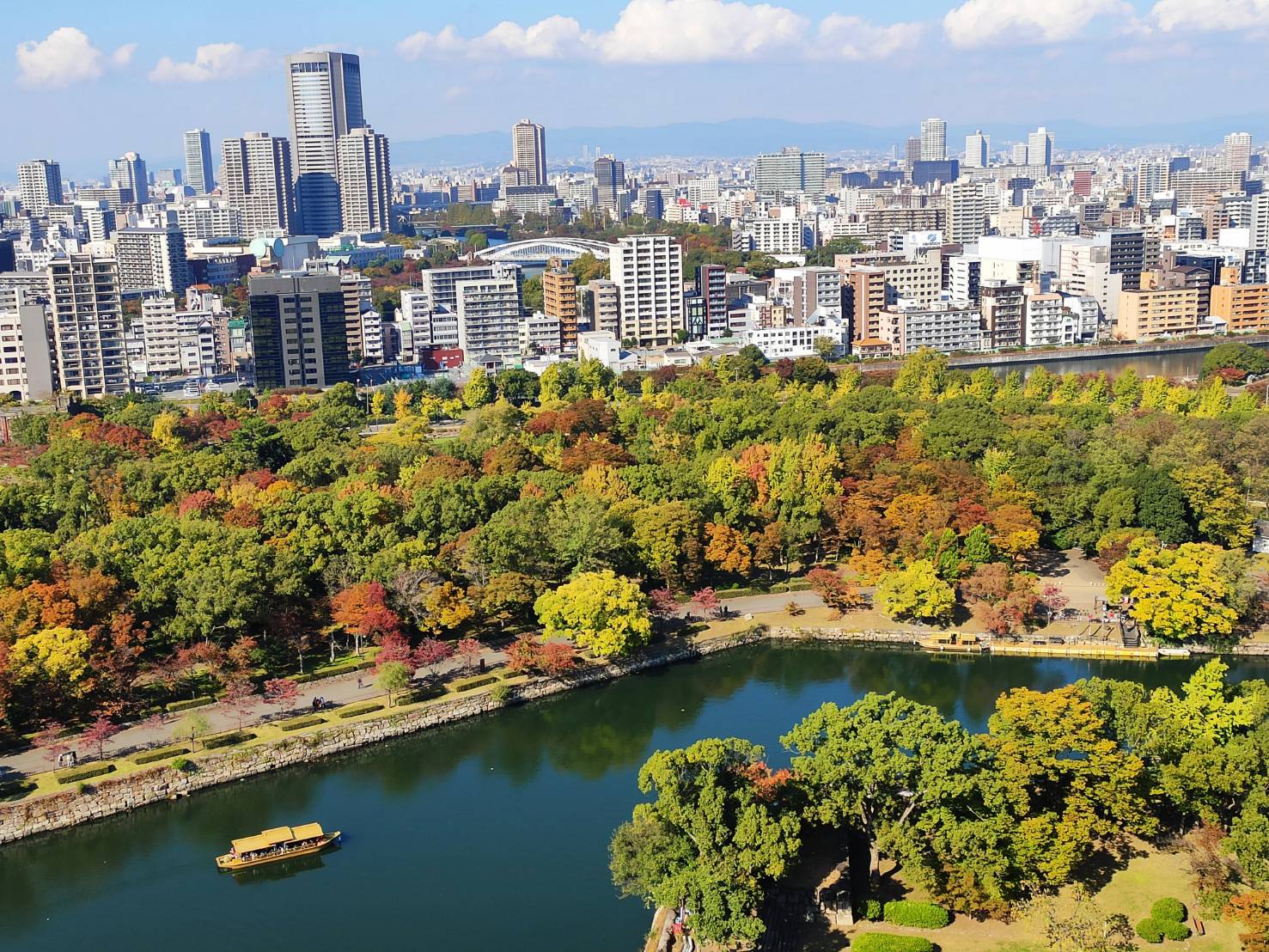
Plus, you’ll get a good look at the golden shachihoko (tiger-headed carp) fitted against the green patina roof. It’s hard to imagine they’re the same size as the replica located on the 2nd floor.
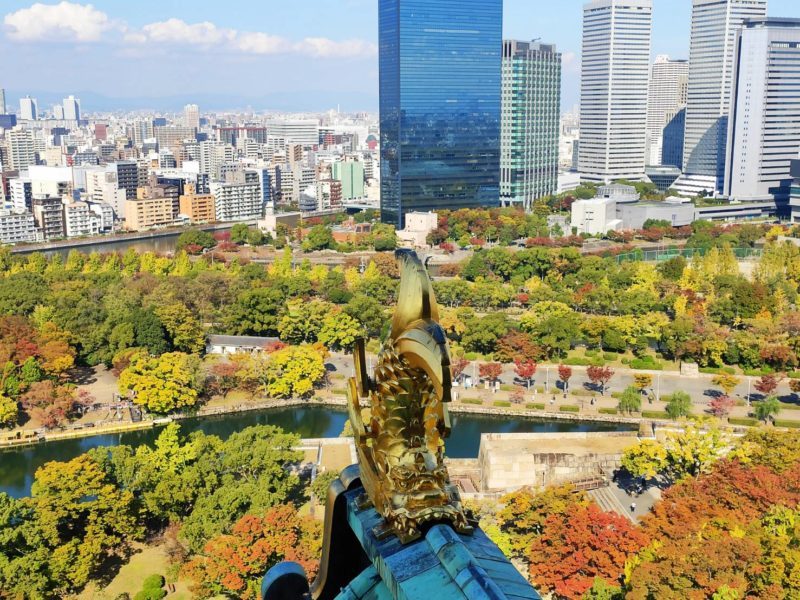
■ So is it worth the price of admission?
I think so! Do you like history? Want to imagine what it would have been like to peer out over the castle domain some 400+ years ago? Want to see an actual surcoat worn by Toyotomi Hideyoshi?
If you answered yes to any of those questions, then ABSOLUTELY visit the museum!
The museum is only ¥600 for adults and free for those junior high school age and younger. You can get a small discount ticket if you purchased a one-day Osaka Metro pass. You can also save a few yen with a discounted ticket like the Osaka History Museum and Osaka Castle Museum set ticket for ¥1,000 or the Suijo Bus and Osaka Castle Museum ticket for ¥2,000. Admission is free if you have purchased the Osaka Amazing Pass.
And if you visit in the daytime, definitely stop at the nearby Bluebirds Rooftop Terrace in the adjacent Miraiza building. Reserve a table for BBQ or simply drop in for a drink!
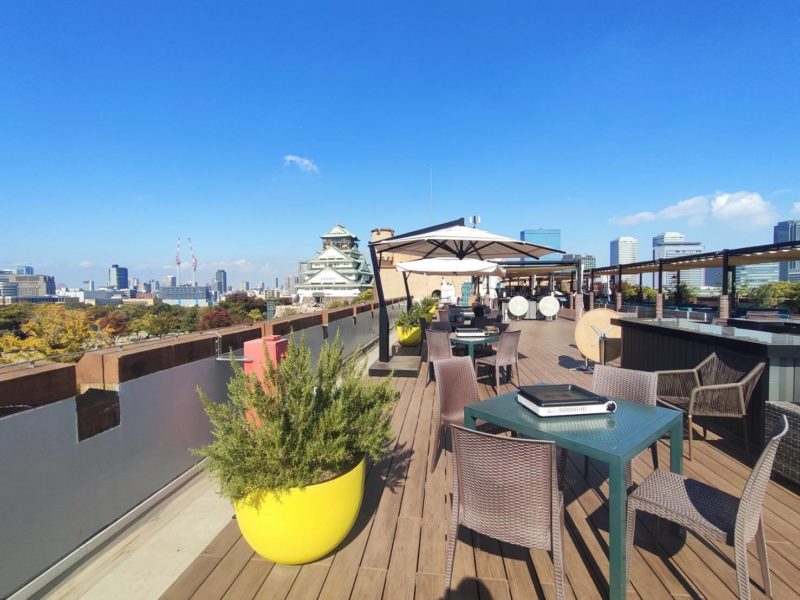
*The castle museum is wheelchair accessible and there is also an accessible bathroom on the second floor.
*The diaper changing table is located in the women’s bathroom on the second floor.
*Normally, you can rent a battle helmet & surcoat for pictures inside the museum, however this experience is temporarily closed due to covid.
▼Read more
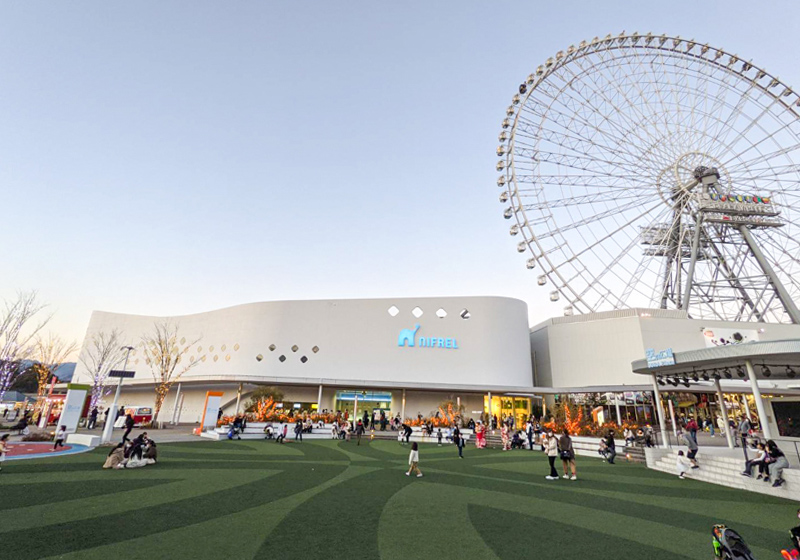 Osaka Prefecture’s amazing aquarium—NIFREL
Osaka Prefecture’s amazing aquarium—NIFREL

Supporter
The contents of this page were current at the time it was posted, but may differ from the present.
Text visible in this map is based on information from Map Tiler and may differ from actual geographical names.

